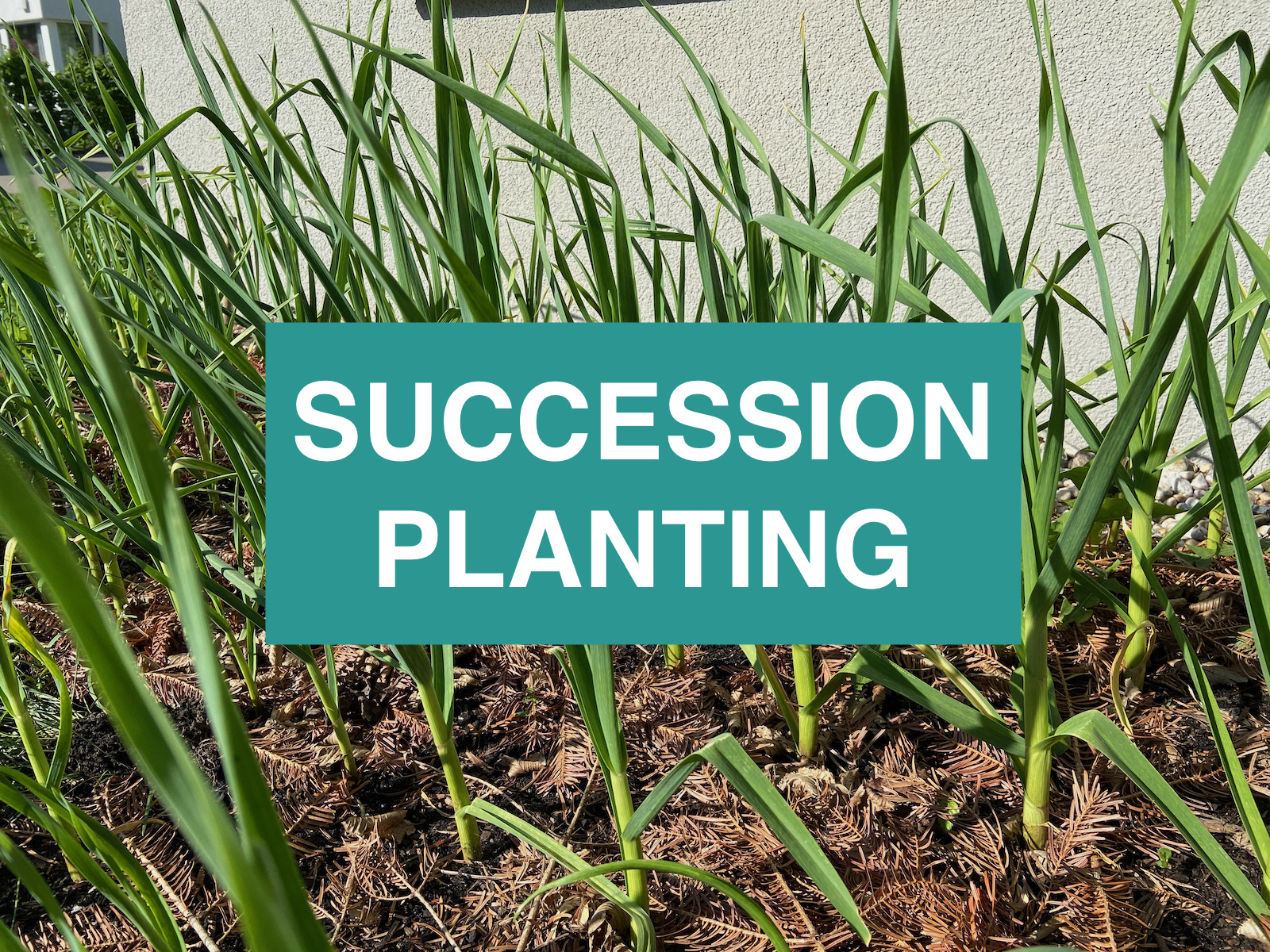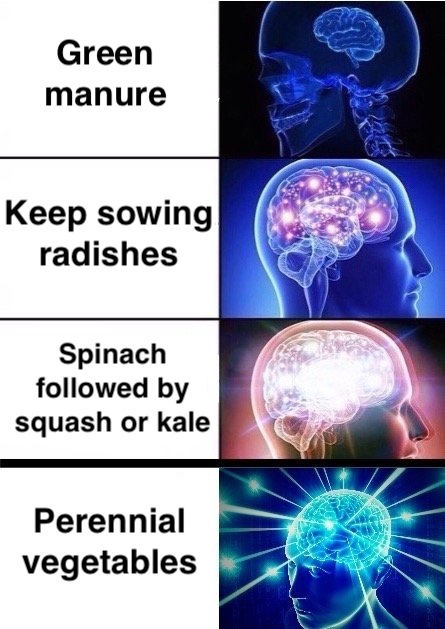Succession planting

Getting better and higher yields is what most of us backyard farmers are trying to achieve with their gardens. Mostly we are constrained by the space available. We optimize how we can use it by combining plants in a space-effective way. We look at layers and rood depths to fill out every niche we have. For example, underplanting tomatoes with basil, chives and strawberries is an easy way to use one container or bed for many plants.
But there is another dimension we can optimize for: time. Most plants like annual alliums (onions, garlic, leeks) or most root vegetables (potatoes, carrots, beets) will leave a space after harvest. If we plan for this space and use it for other plants afterward is another way to get more out of our backyard garden.
Read on to get an idea of what succession planting is all about and some ideas about what you could grow next.
What is succession planting?
Succession planting is a method to optimize yield by replanting crops after the first crop is harvested to maximize the growing time available.
You might have heard the term “Crop rotation”. While it is somewhat related, it is not the same. Crop rotation mostly refers to planting schedules between seasons, succession planting is what you can plant in the same season.
Methods of succession planting

Do nothing
The simplest way of doing succession planting is to do nothing with your space after harvest and I mean nothing. No tilling, no watering, not even looking at it. Nature will do its thing and eventually, something will grow there in the conditions the bed or container provides. Before planting your plants again the following year, just till very lightly or chop and drop a few weeks before the growing season starts again to provide organic matter and mulch for your annual vegetables.
Green manure
The second simplest way to do succession planting is to grow green manure. As soon as you harvest your annual vegetables, you sow green manure. Most plants used for this task help improving the soil by using their taproots to break hard soil, transporting fertility out of the deep ground to the top layer, or by getting organic matter into the ground (when you leave the roots in). They should be maintenance-free (check for something native to your region) and will grow over the cold period until you plant again. Just before planting your next annuals, till them lightly into the ground or chop and drop in place when you do no-dig. This gives you a lot of organic matter and/or mulch for your vegetables, prepare the space as you would do for the “Do nothing” method.
Reseed the same plants in different intervals
If you look for a constant source of fresh vegetables from your backyard garden, start sowing in intervals. For example radishes, lettuces and beets are fast-growing crops, which can be resown many times in a season. Start seeding early and reseed in another bed or container after 2-4 weeks, then harvest the first batch and reseed there again. They are mostly fine with colder weather at the beginning and end of the growing season so you can do that until it gets really cold. A simpler version of this is called “harvest and seed”: This means you just have one space and as soon as you harvest you (re)seed again.
Combine compatible plants by growing time
Many annual vegetables have a specific time when to grow and harvest. There are so-called cold weather crops and warm weather crops. Some plants don’t mind having a cooler climate or even grow better in it (carrots, radishes, beets, spinach) but some others need the heat to grow well (cucumbers, solanums, squash). For example, garlic needs to be harvested in temperate northern hemisphere climate around July, this gives you enough time to get some plants into that bed, which either grow all year round like radishes or need the warmth like peppers and melons. Or you can use plants that don’t mind the colder season like kale or other brassicas.
Grow early: Onions & Spring Onions, Garlic, Lettuce, Radishes, Spinach, Peas, Kohlrabi, early Cabbage
Succession plants: Eggplants, Peppers, Melons, Squash, Beets, Carrots, Broccoli, Brussels sprouts, Cabbage, Cauliflower, Chinese cabbage, Cress, Kale, Turnips, Common bean, Swiss chard
A note on perennial vegetables
Succession planting is only important if you harvest your plants fully. While most common vegetables are grown as annuals, there are a lot of rather unknown vegetables, which are perennial. If you are lazy like me and want to let nature do its thing while you keep eating, look into perennial vegetables.
Whatever solution you prefer and pick, make sure to start thinking about the time dimension in your garden, to leverage the full potential of your backyard farm and keep you and your community fed over a long period with as many vegetables as possible.